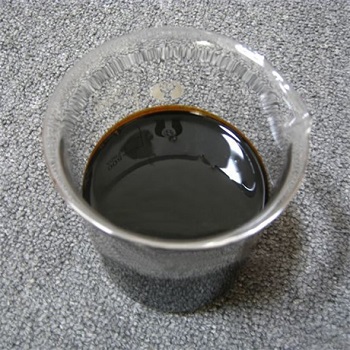| Chemical Properties | Molasses extract is a by-product of the sugar-refining process; the syrup or the “mother water” is separated from the grains of the raw sugar in the process of manufacture. The use of molasses dates back to 1493 when Columbus introduced it to the West Indies. Molasses became an important product in Colonial trade. It was the major sweetener used in America until after World War I because it was less expensive than sugar. The quality of molasses depends on the character and treatment of the cane juices from which it is obtained. Molasses is generally dark brown to bright amber. Blackstrap molasses is the final or exhausted molasses of raw sugar manufacture. Molasses extract is usually sweet; it can also taste burnt.

Because of its nature, molasses is expensive to export and is therefore mostly consumed where it is produced. Molasses is used as animal feed (for example in molassed beet pulp), as a food ingredient (where imported cane molasses is mostly used for reasons of taste) and as a raw material in the fermentation industries for the production of yeast, citric acid, vitamins, amino acids and lactic acid as well as for the production of ethanol.
|
| Uses | Molasses is the byproduct of the manufacture of sugar from sugar
cane in which the syrup is separated from the crystals. the highest
grade is edible molasses which is most often found as table syrup.
the lowest grade is blackstrap molasses. molasses is a strongly fla-
vored, dark colored syrup containing 70–80% solids of which
50–75% is sucrose and invert sugar. it is used in syrups and in the
production of caramel. |
| Uses | A type of syrup, molasses is a byproduct of the sugar industry. It is the mother liquor remaining after crystallization and removal of sucrose from the juices of sugar cane or sugar beet and is used in a variety of food and nonfood applications. |
| Production Methods | Molasses, first produced from sugarcane in China and India centuries ago and later in Europe and Africa, was introduced as the by-product of cane-sugar production into Santo Domingo by Columbus in 1493. |
| Definition | The thick liquid remaining after the crystallization and removal of sugar from the mother liquor formed during sugar manufacture. |
| Composition | Total solids in molasses as determined by drying methods may vary from 75 to 85%, and the sucrose content may be
from 25 to 40%. Reducing sugars as determined by copper reduction methods may be from 12 to 35%. The total sugar content, both
sucrose and reducing sugars, is usually about 50%, but can be in considerable excess of this figure. Other important constituents:
Klasonlignin (16.4% of which 16.3% total aldehyde, 5.3% vanillin, 9.0% syringa aldehyde); about 12 to 20% saccharose (located in
the juice of the stem); about 0.1 to 0.25% wax. |
| Taste threshold values | Taste characteristics at 1%: sweet, molasses, brown, with sulfury, bready and malty nuances. |
| Agricultural Uses | Molasses is the thick liquid left over after sucrose is
removed from the mother liquid in sugar manufacture.
Blackstrap molasses is the syrup from which no more
sugar can be obtained economically. It contains about
20% sucrose, 20% reducing sugars, 10% ash, 20% nonorganic
sugars and 20% water. It is combustive and nontoxic. |



